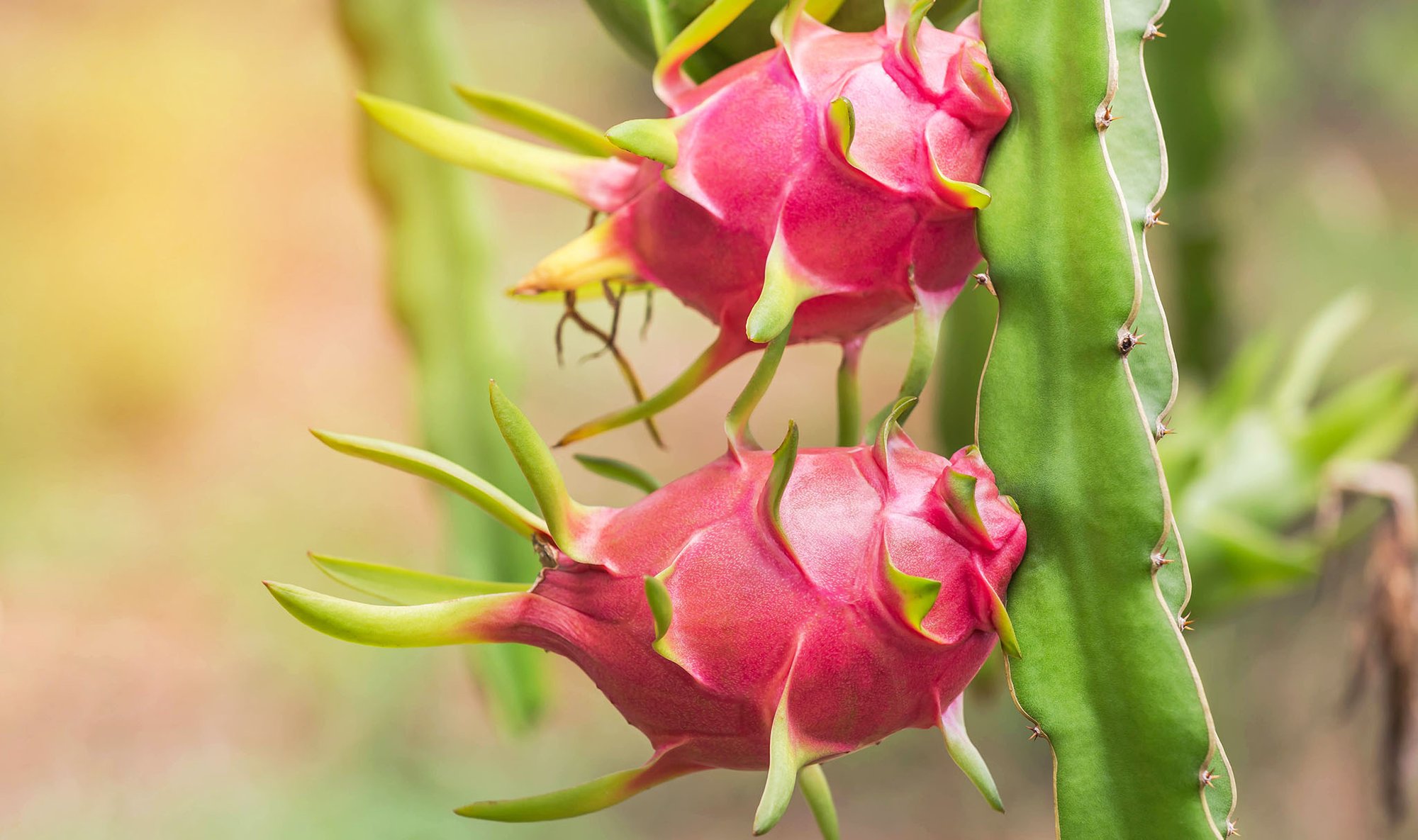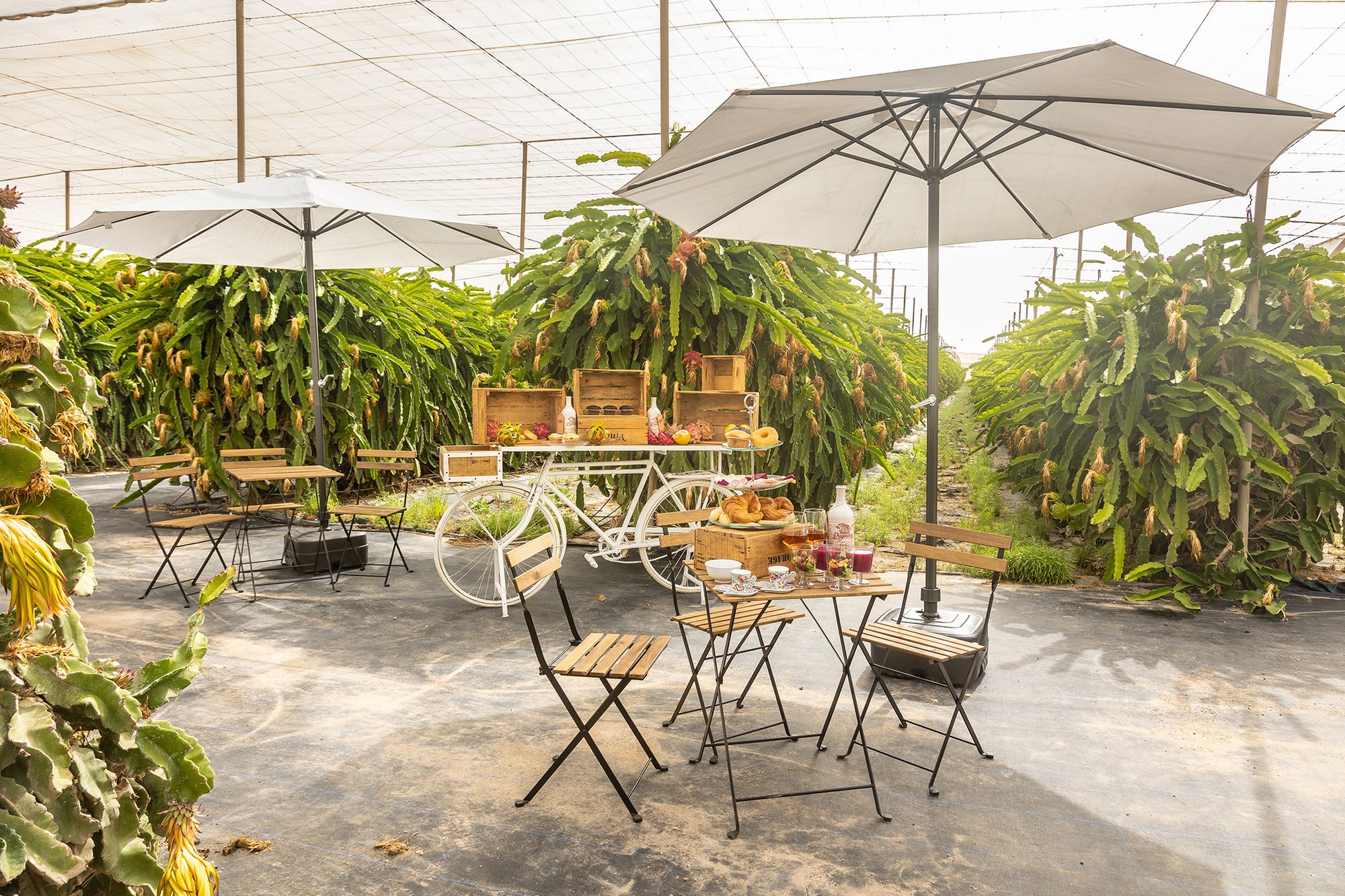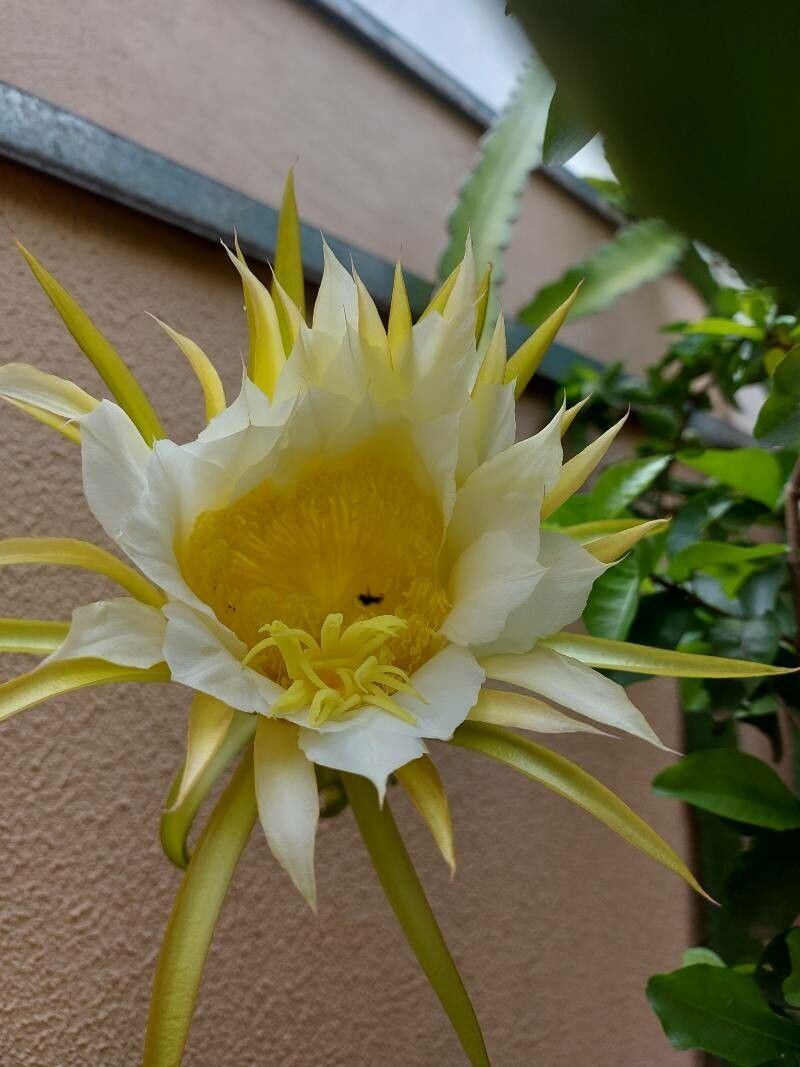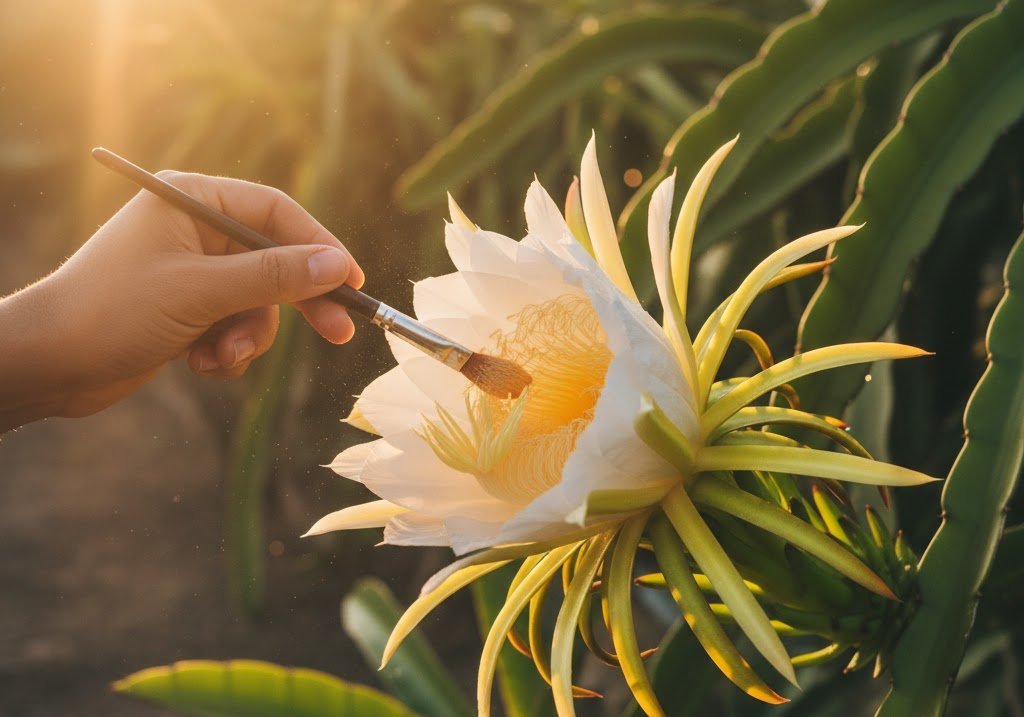Have you ever sliced into a dragon fruit, with its brilliant pink skin and sweet, kiwi-like flesh, and thought, "Could I actually grow this?" The answer is a resounding yes. Growing this incredible cactus is a rewarding project for any gardener, and it’s much simpler than you might think. This guide will walk you through everything, from picking the perfect variety to harvesting your very first spectacular fruit. You’ll learn the secrets to keeping your pitaya plant happy, turning what seems like an exotic challenge into a familiar backyard success story.
Your Journey to Homegrown Dragon Fruit
We're going to cover everything you need to know about how to grow dragon fruit, from choosing the right variety for your climate to nurturing your plant until you're holding that first harvest. Think of this as your personal roadmap.
You'll learn exactly how to:
Navigate the dozens of options to find your perfect variety.
Set up the ideal soil and support structure from the get-go.
Master watering and feeding for explosive, healthy growth.
Ensure your flowers get pollinated for a heavy fruit set.
Choosing the Right Dragon Fruit Variety and Location
Your journey to a successful harvest begins long before you touch a shovel. It all starts with two key decisions: which dragon fruit to grow and where to plant it. Get these right, and you're laying the foundation for a thriving, fruit-bearing plant. To see what's out there, you can explore detailed profiles on hundreds of dragon fruit varieties in our dragon fruit explorer.
Navigating the World of Dragon Fruit Varieties
Dragon fruit isn't a one-size-fits-all plant. The varieties you'll find differ wildly in flavor, flesh color, and—most importantly for you, the home gardener—their pollination needs.
It helps to think about them in a few broad categories:
Hylocereus undatus: This is your classic pink-skinned, white-fleshed dragon fruit you see in most grocery stores. It's a fantastic starting point and known for being a vigorous grower.
Hylocereus guatemalensis: Varieties from this group usually have that stunning magenta or deep red flesh. Their flavor is often richer and more complex than their white-fleshed cousins.
Hylocereus megalanthus (now often classified as Selenicereus megalanthus): This is the much-loved yellow dragon fruit. It’s famous for being exceptionally sweet and sporting a bright yellow skin.
Now, here’s a crucial detail: is the variety self-fertile, or does it need a partner? Many of the most flavorful types require cross-pollination from a genetically different dragon fruit to set fruit. If you only have space for a single plant, you absolutely must choose a self-fertile variety.
Ready to find your perfect match? This table breaks down some popular varieties that are great for home gardeners.
Popular Dragon Fruit Varieties for Home Gardeners
Variety Name | Flesh Color | Flavor Profile | Self-Fertile? | Key Growing Tip |
|---|---|---|---|---|
American Beauty | Magenta | Sweet, grape-like, refreshing | Yes | Known for its rich, complex taste. |
Physical Graffiti | Magenta | Sweet with a hint of tartness | No | Needs a cross-pollinator. |
Sugar Dragon | Red | Very sweet, berry-like notes | Yes | A universal pollinator! A must-have if you plan to grow multiple varieties. |
Yellow Dragon | White | Exceptionally sweet, almost like candy | Yes | Can take longer to mature than others, but the flavor is worth the wait. |
Vietnamese White | White | Mildly sweet, classic flavor | Yes | A vigorous grower, great for beginners. This is the most common variety. |
Remember, this is just a starting point. The real fun is in trying different varieties to see which ones you—and your climate—love the most.
Finding the Best Spot in Your Garden
Once you've got a variety in mind, it's time to scout the perfect location. Dragon fruit is a subtropical cactus, and its needs are pretty non-negotiable if you want healthy growth and a good harvest. It thrives in USDA Hardiness Zones 9-11.
The growing environment is one of the biggest factors determining your plant's yield. Dragon fruit truly thrives in tropical or subtropical climates where temperatures hover between 68°F to 86°F (20°C to 30°C). This cactus demands well-drained, sandy soil and at least 6 to 8 hours of direct sunlight every single day to really get into fruit production mode.
Practical Tip: Don't just guess about the sunlight. Spend a day actually observing the spot you've chosen. Track how many hours of direct, unobstructed sun it gets. Being an hour or two short can be the difference between a lush, green plant and one that actually gives you fruit.
Perfecting Your Soil
Dragon fruit absolutely hates having "wet feet." Its roots are incredibly prone to rot if they sit in dense, waterlogged soil. That means making excellent drainage your top priority. If you're working with heavy clay soil, you'll need to amend it quite a bit.
Your goal is to create a sandy loam that drains quickly. Here’s a straightforward approach:
Begin with your native soil.
Combine the soil with mostly sand, peat moss, perlite or pumice, and charcoal to enhance aeration and drainage.
Apply organic compost on the surface as the final step to add nutrients and improve structure.
You're aiming for a slightly acidic to neutral pH, somewhere between 6.0 and 7.0. A simple soil test kit from any garden center will tell you where you stand. Giving your plant this solid foundation from the start is one of the best things you can do for its long-term health.
Planting Your Cutting and Building a Strong Trellis
Once you've prepped the perfect spot, it's time for the exciting part: getting your dragon fruit cutting in the ground. A little technique right now makes all the difference. Think of it this way: a healthy root system and a sturdy support structure are the two pillars your future success will be built on.
Getting Your Cutting Planted Just Right
If you have a fresh cutting, you need to let the cut end "cure," or callus over, for several days in a dry, shady place. This simple step is your best defense against rot. When you are ready to plant, the single biggest mistake people make is planting it too deep. Dragon fruit cuttings have a shallow root system at first and will easily rot if they're buried too far down.
Practical Tip: Aim for a planting depth of just 1-2 inches (2.5-5 cm). That shallow depth is all it takes to anchor the cutting while encouraging roots to develop quickly in the warm surface soil.
This infographic breaks down the soil prep process, which you should have dialed in before the cutting even gets near the dirt.
As you can see, getting that soil composition right is the foundation for everything that comes next.
Why a Strong Trellis Is Non-Negotiable
Here’s a surprising fact that catches many new growers: a dragon fruit plant without a trellis will probably never give you fruit. This isn’t just a friendly suggestion; it’s a biological imperative. In the wild, Hylocereus is a climbing cactus that scrambles up trees to get to sunlight.
If you don't give it something to climb, the plant will just sprawl on the ground, pouring all its energy into growing more green segments instead of flowering. A solid trellis signals that the plant has the support it needs to grow up, mature, and finally enter its fruiting stage. A mature plant loaded with fruit can easily top 100 pounds (45 kg), so your support structure must be built to last.
DIY Trellis Options for a Thriving Plant
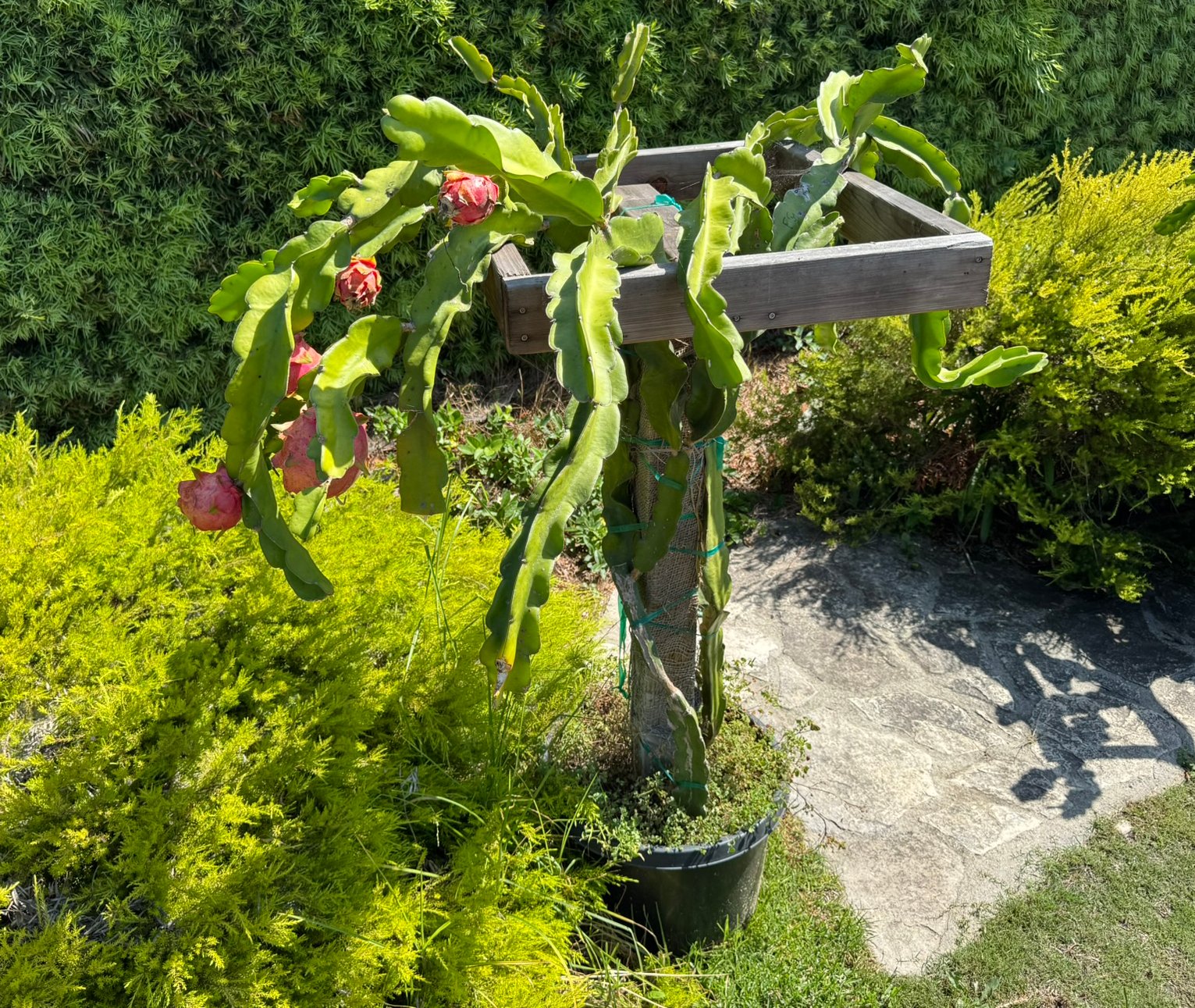
Building your own trellis is a satisfying weekend project. The main goal is to build something tall and incredibly strong, with a "canopy" structure at the top where the stems can hang over. That draping effect is what triggers flowering.
Here are a few popular and effective designs:
The Classic Post and Cross: Sink a sturdy 4x4 or 6x6 post deep into the ground with concrete, leaving at least 6 feet (1.8 meters) above ground. Bolt a cross-shaped structure to the top—some 2x4s or even a repurposed motorcycle tire work great—for the stems to drape over.
The T-Post System: For a whole row, run a line of metal T-posts and connect them with heavy-gauge wire or cattle paneling. This creates a living wall of dragon fruit, which is great for sun exposure and air circulation.
The A-Frame Trellis: Think of this as two ladder-like panels leaning against each other to form an "A." It offers a ton of surface area for climbing and is a smart way to get more growing space out of a smaller footprint.
Once the trellis is up, plant the cutting at its base. Gently tie the main stem to the post using soft, flexible ties—strips of old t-shirts work perfectly. Check on it every couple of weeks to add new ties as it climbs, always encouraging that upward growth. This simple act of training ensures your plant develops the strong, vertical framework it needs for a huge harvest down the road.
Watering, Fertilizing, and Pruning Your Plant
Once your dragon fruit is happily climbing its trellis, your focus shifts to the big three: watering, feeding, and pruning. Getting these right is how you'll guide your plant toward a spectacular harvest.
Mastering the Art of Watering
Yes, it's a cactus, but dragon fruit gets thirsty, especially when it’s actively growing from spring through fall. The trick is to strike that perfect balance—giving it enough moisture to fuel growth without creating soggy soil that leads to root rot.
Here's a problem-solution scenario: You notice the base of your plant's stems are yellowing and feel soft. This is a classic sign of overwatering.
Solution: Before you grab the hose, let the top 2-3 inches (5-7.5 cm) of soil dry out completely. Stick your finger deep into the soil; if it feels damp, wait another day or two. When you do water, give it a deep, thorough soak.
Fueling Your Plant for Fruit Production
Properly feeding your dragon fruit is the secret weapon for getting explosive growth and tons of flowers. A hungry plant is a slow-growing plant, so a regular fertilizing schedule is non-negotiable.
Growing Season (Spring/Summer): Every two months, apply a balanced, slow-release granular fertilizer with an NPK ratio like 10-10-10 or 13-13-13.
Post-Harvest (Fall): Once the plant is done fruiting, switch to a low-nitrogen formula, like a 0-10-10. This tells the plant to stop putting out tender new growth and instead focus on strengthening its roots for the winter.
Practical Tip: Many seasoned growers in the Tendra community swear by supplementing with rich organic matter. They recommend top-dressing the base of the plant with a 2-inch (5 cm) layer of aged compost or well-rotted manure twice a year—once in early spring and again in mid-summer.
Pruning for an Umbrella Shape and More Fruit
Pruning is probably the most crucial—and most misunderstood—part of learning how to grow dragon fruit well. This isn’t just about hacking away at the plant. It's about strategically shaping it to maximize sunlight, improve air circulation, and funnel its energy into making fruit.
The goal is to create an open, umbrella-like shape.
Training the Main Stem: As your plant climbs, snip off any side shoots that pop out from the main stem, forcing energy upward.
Creating the Canopy: The moment the main stem grows past the top of the trellis, "top" it by cutting off the tip. This triggers the plant to send out new branches, forming that umbrella canopy.
Maintenance Pruning: After the harvest, cut away any stems that have already produced fruit (they rarely do again), and get rid of anything that looks damaged or is crowding the center.
Always use clean, sharp shears. It can be a lot to remember, which is why Tendra's Smart Care Reminders are so helpful—they'll ping you when it's time to fertilize or do that big annual prune. For more in-depth techniques, you can find guidance in our extensive plant care articles.
Getting Flowers and Hand-Pollinating For Fruit
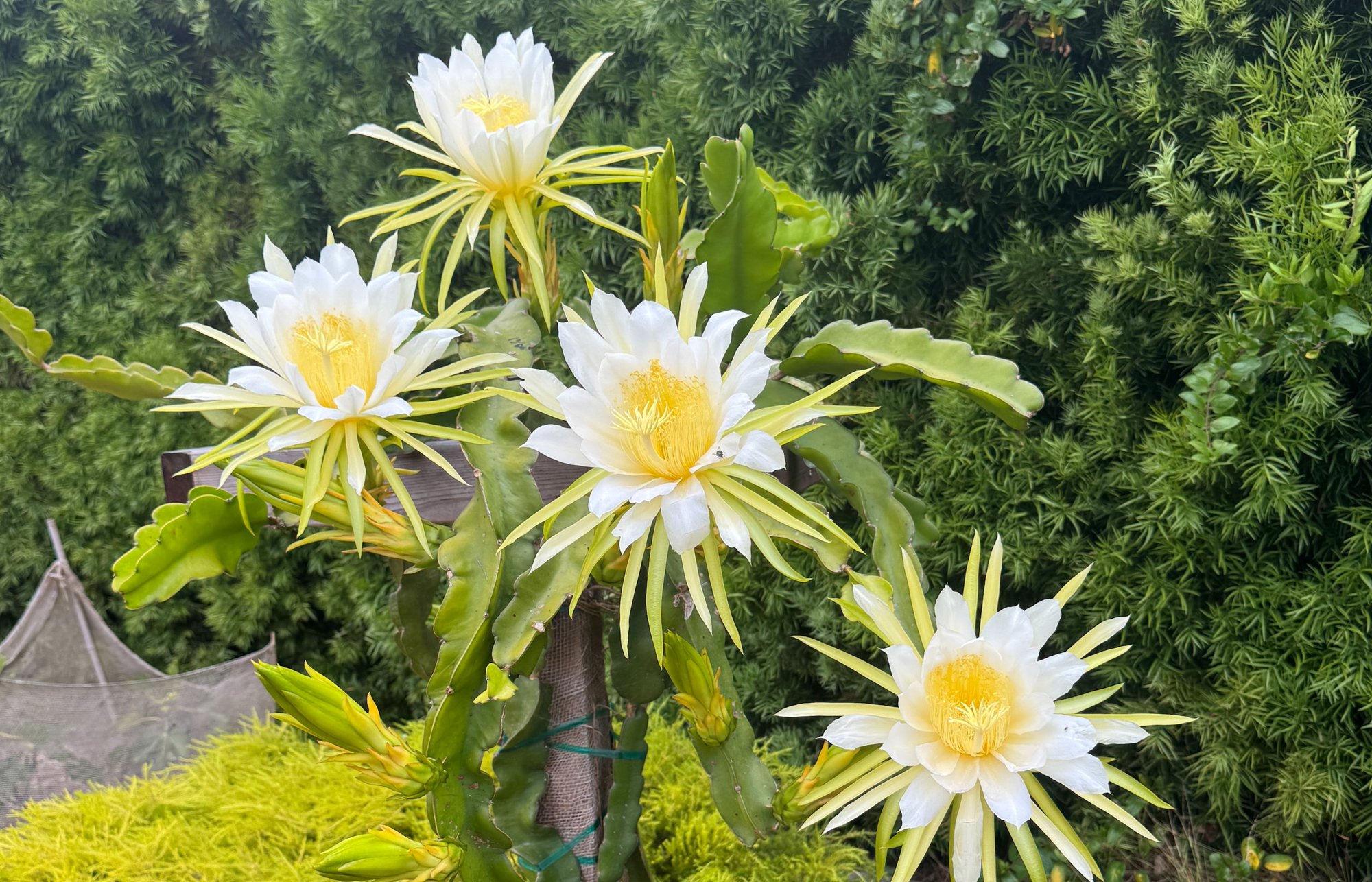
This is the moment all your hard work pays off. Seeing your dragon fruit finally produce those huge, night-blooming flowers is a magical experience. A surprising fact: these incredible, fragrant blossoms open for just one single night, which means you have a very narrow window to make pollination happen.
Self-Fertile vs. Cross-Pollination: Know Your Plant
First, you need to know what you're dealing with. Is your dragon fruit variety self-fertile, or does it require pollen from a different variety to make fruit?
Many popular types like 'Sugar Dragon' and 'Vietnamese White' are self-fertile. But many of the most sought-after varieties are self-sterile—they absolutely need a genetically different dragon fruit variety to cross-pollinate with. If your plant makes gorgeous flowers every year but you never get fruit, a lack of proper pollination is almost always the reason.
Even with a self-fertile type, hand-pollinating can dramatically increase your fruit size and yield.
The Art of Hand-Pollination
Since these flowers are nocturnal, their natural pollinators are moths and bats, which may not show up in your garden. Hand-pollination is your most reliable tool for success. You just need a small, soft paintbrush and a flashlight.
Here’s your game plan for the big night:
Wait for the Bloom: Head out a couple of hours after sunset. The flowers should be wide open.
Collect the Pollen: Gently swirl your brush around the fluffy, yellow anthers that form a ring around the center of the flower.
Make the Transfer: Carefully dab that pollen all over the stigma, the prominent structure that rises from the very center of the flower. Give it a good, thorough coating.
If you're cross-pollinating, you collect pollen from a flower on one plant variety and transfer it to the stigma of a flower on a different variety.
Real-World Application: Sarah's Pollination Problem
Let's imagine a gardener, Sarah from Phoenix. For two years, her dragon fruit produced dozens of stunning flowers each summer. But every single one withered and dropped. No fruit. Frustrated, she turned to the Tendra app and used the Twin Plant Mates feature. She connected with another dragon fruit grower just a few miles away who was growing three different varieties. They got in touch and swapped cuttings. The very next season, Sarah had a compatible pollinator partner for her original plant. That summer, she hand-pollinated between the two varieties and was rewarded with over 30 pounds (13.6 kg) of delicious, homegrown dragon fruit. Her story is a perfect example of how community connection can solve one of the biggest challenges when you’re learning how to grow dragon fruit.
Harvesting Your Dragon Fruit (and Keeping Pests Away)
After months of watching your plant grow, the moment you’ve been waiting for is finally here. Timing your harvest is everything. Unlike a banana, dragon fruit stops ripening the second it's cut from the stem.
Knowing When to Pick
The most obvious signal is a dramatic color shift from green to a brilliant pink or vibrant yellow. You’ll also see the little leaf-like flaps on the fruit begin to wither at the tips.
Practical Tip: The best way to know for sure is to give it a gentle press. A perfectly ripe dragon fruit feels like a ripe avocado—it will give just slightly to firm pressure. If it’s rock-hard, leave it alone.
Once it’s time, use a clean, sharp pair of pruning shears to make a clean cut at the top of the fruit, leaving a tiny piece of the stem attached.
A Smart Approach to Pests and Diseases
The best strategy is always prevention and spotting trouble early. Good air circulation from pruning is your best defense against fungal problems.
Keep an eye out for these common culprits:
Mealybugs: Little white, cottony bugs hiding where stems join.
Aphids: Tiny pests on tender new growth.
Ants: A dead giveaway that you have mealybugs or aphids, as they "farm" the honeydew these pests produce.
A strong blast of water often knocks them off. For persistent issues, organic neem oil or insecticidal soap will do the trick. This is where a tool like Tendra’s AI disease diagnosis can be a game-changer. If you see something that doesn't look right, just snap a picture with the app. It can identify the problem in seconds with over 95% accuracy and give you a practical, eco-friendly plan to fix it.
For a deeper dive, check out our guide on identifying and treating common plant diseases. As dragon fruit gets more popular, growers are getting smarter. These efforts are helping more and more gardeners learn how to grow dragon fruit successfully. You can learn more in this detailed report on the dragon fruit market.
Conclusion: Your Dragon Fruit Adventure Awaits
Growing your own dragon fruit is an incredibly rewarding journey that transforms an exotic-looking cactus into a staple of your garden. By selecting the right variety, providing a sturdy trellis, mastering the essentials of watering and feeding, and understanding the magic of pollination, you have all the tools you need for a successful harvest. Remember that challenges, like pollination puzzles or mystery pests, are just part of the process. With a little patience and the right knowledge, you can enjoy the sweet taste of homegrown success.
This is where the power of community shines. You don’t have to figure it all out alone. Every question you have has likely been solved by a gardener near you. Discover Tendra's community features—where local gardeners connect, grow, and thrive.
Join thousands of gardeners discovering how to grow dragon fruit and more with Tendra.
